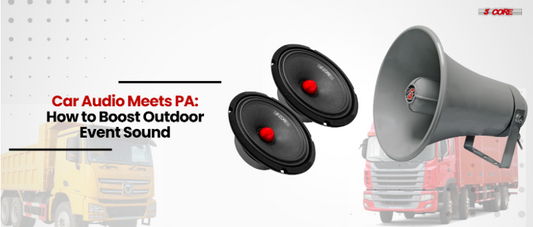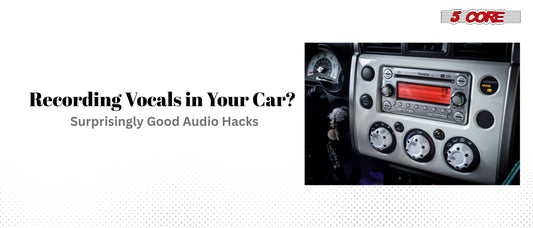DIY Car Audio Installation: Pros, Cons, and Best Practices
Car audio systems have come a long way from the AM/FM radio. Today, they offer an impressive listening experience with crisp highs and chest-thumping bass. If you’re a car enthusiast or simply a music lover, upgrading your car’s audio system is a tempting prospect. While you can always turn to professionals for installation, many adventure car owners opt for DIY car audio installations. This blog will explore the pros, cons, and best practices of taking the DIY route.
Pros of DIY Car Audio Installation
Cost Savings: One of the most significant advantages of DIY car audio installations is cost savings. By eliminating labor costs, you can often invest more in high-quality audio components.
Customizable: DIY installation gives you complete control over the components and design of your car audio system. You can choose the Car Speakers, Car Amplifiers, Car Woofer, and head units that match your preferences and budget.
Learning Experience: Installing your car sound system can be a rewarding learning experience. You gain valuable knowledge about your vehicle’s wiring and audio components, which can come in handy for future maintenance or upgrades.
Pride of Achievement: Successfully completing a DIY car audio installation can be a source of pride. It’s a tangible accomplishment that you can enjoy every time you listen to music in your car.
Cos of DIY Car Audio Installation
Technical Skill Required: Car sound installation is not a beginner-friendly task. It involves understanding wiring diagrams, electrical systems and potentially removing interior panels. Inadequate knowledge can lead to damage or malfunction.
Time-consuming: Expect to invest a significant amount of time in a DIY project. Rushing can result in mistakes, so patience is the key!
Warranty Implication: Modifying your car’s electrical system or audio components may void warranties, so be sure to check with your manufacturer.
Best Practices for DIY Car Sound Installation
Research Properly: Before starting, research your car’s model, as well as the components you plan to install. Understand compatibility and any special requirements.
Gather Quality Tools: Invest in the necessary tools, such as wire strippers, crimping tools, soldering wire and equipment, and a multimeter, to ensure a clean and secure car audio installation.
Plan the layout: Plan the placement of speakers, amplifiers, and the head unit to optimize sound quality and ensure a clean, organized installation.
Follow Wiring Diagrams: Refer to wiring diagrams for your vehicle and audio components meticulously. Correctly connect wires and use connectors and insulation to prevent shorts or electrical issues.
Take Safety Precautions: Disconnect the battery before starting work to avoid electrical accidents, and exercise caution when working around airbags or sensitive vehicle components.
DIY car audio installation offers many benefits, including cost savings, customization options, and a sense of achievement. However, it also presents challenges related to technical expertise and time commitment. Therefore, it is essential to approach this project with careful planning and adherence to best practices.
If you are considering a DIY car audio installation, remember that success depends on both your knowledge and the quality of the sounnd equipment you choose. Speaking of quality equipment, we are proud to state that, 5 Core is counted as the place of premium car audio components. We are an award-winning company providing top-notch Car Speaker, Car Amplifier, Car Woofer, and accessories designed to elevate your in-car audio experience.
Upgrade your vehicle sound system with 5 Core Car sound today and experience sound excellence like never before.





